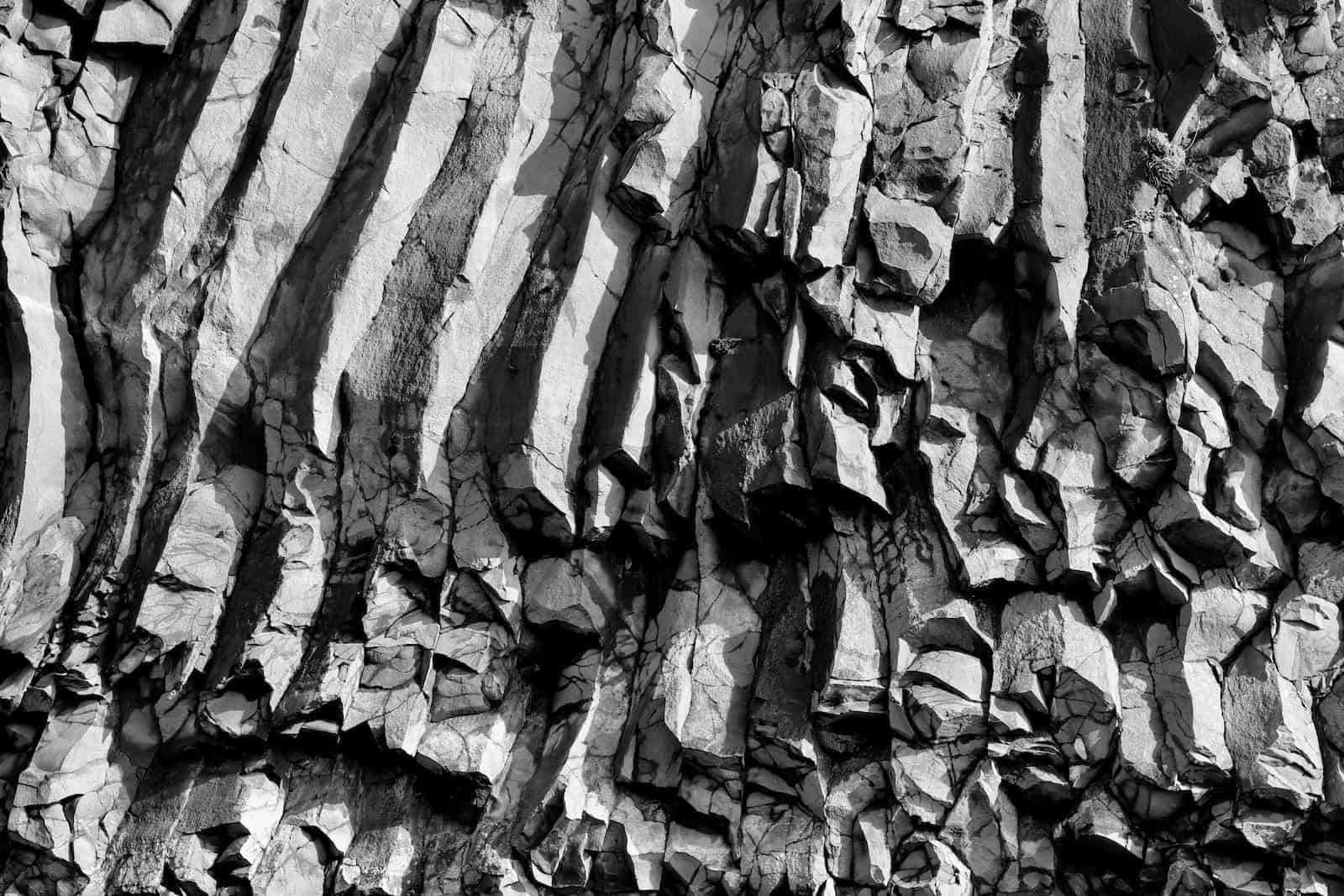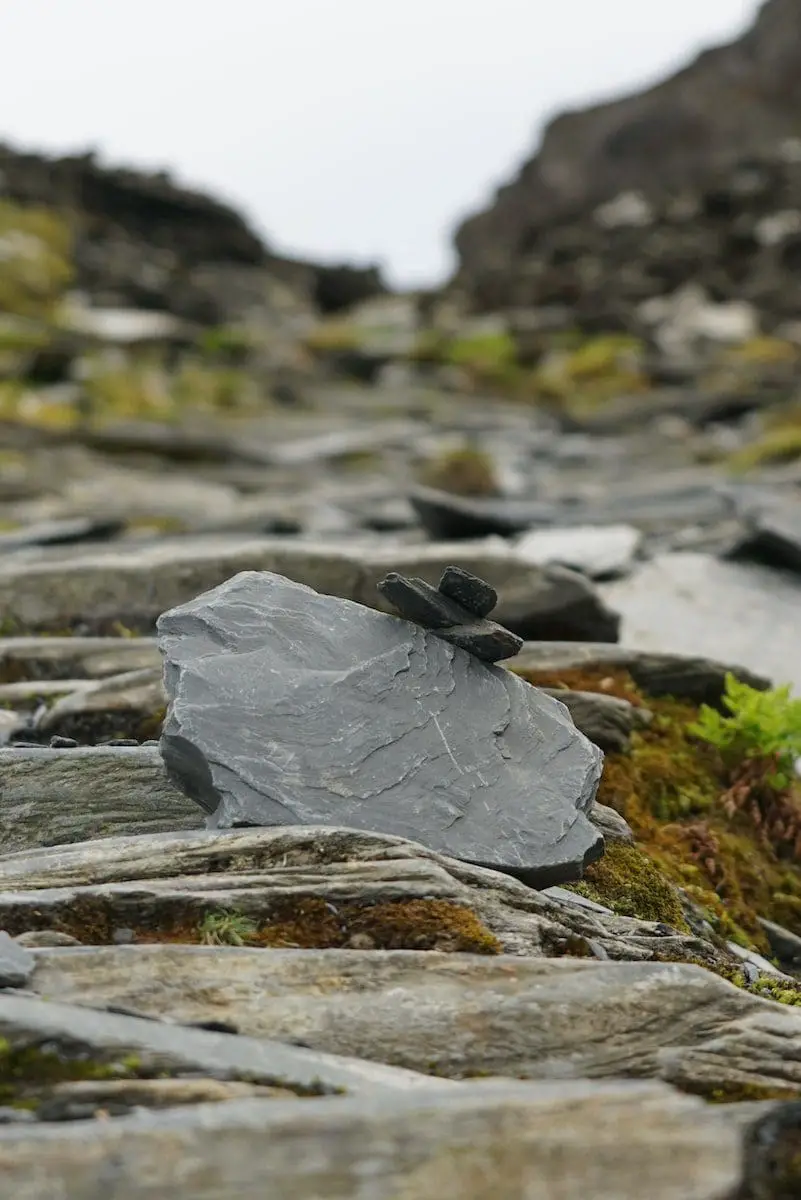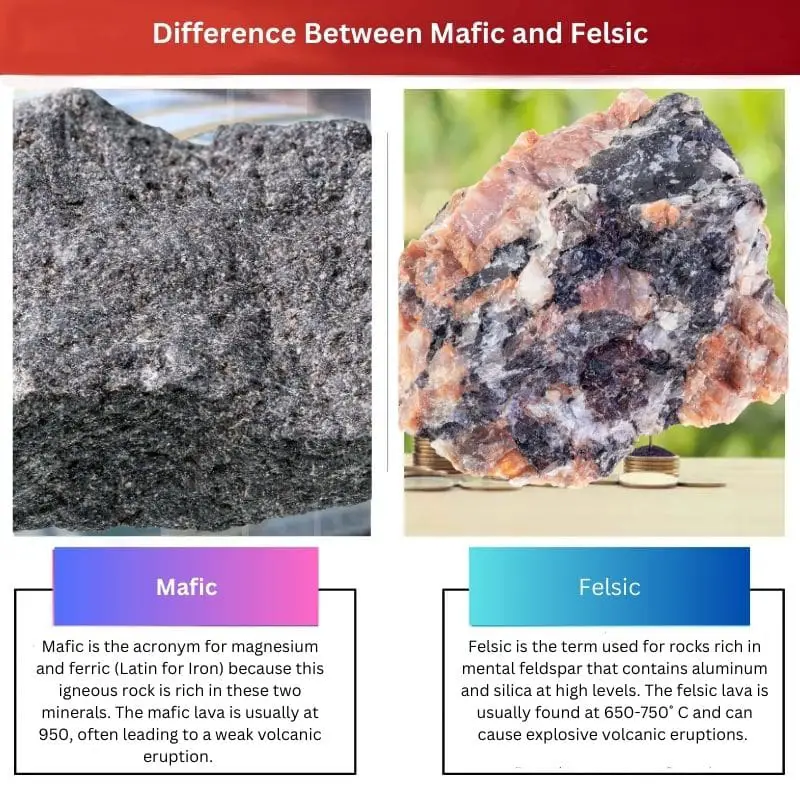Mafic and felsic are not commonly used terms, as one may observe. The few that know the existence of these words are mainly geologists or ones related to that field of study. So, what is it?
Igneous rocks on chemical analysis were found to be abundant in silicate oxides, and therefore, it was decided that these igneous rocks would be differentiated based on their silica content.
Mafic and felsic are the terms used to describe the silica content of igneous rocks formed on the cooling of lava. Sometimes, they are also used to differentiate the characteristics of the lava (or magma).
Key Takeaways
- Mafic rocks are rich in magnesium and iron, have a darker color, and are denser than felsic rocks; examples include basalt and gabbro.
- Felsic rocks are rich in silica, aluminum, potassium, and sodium and have a lighter color and lower density; examples include granite and rhyolite.
- The distinction between mafic and felsic rocks lies in their mineral composition, color, and density, which influence their formation and characteristics.
Mafic vs. Felsic
Mafic rocks are rich in magnesium and iron and have a high density. Mafic rocks are created from magma that is rich in iron and magnesium and is associated with basaltic lava flows. Felsic rocks, on the other hand, are rich in silica and aluminum (Al). Felsic rocks are created from magma that is rich in silica and aluminum and is associated with rhyolitic lava flows.

There is a contrasting difference even in the appearance of the two igneous rocks; one being dark-shaded and the other having light shade.
Comparison Table
| Parameters of Comparison | Mafic | Felsic |
|---|---|---|
| Viscosity of Lava | Low viscosity due to the high temperature of lava | High viscosity |
| Density | High density and heavy | Low-density and lightweight |
| Color | Dark shades of green or black | Light-colored |
| Mineral Content | Rich in magnesium and iron | Rich in aluminum and silica |
| Silica Level | 45-55% | 70-85% |
What is Mafic?
Mafic is the acronym for magnesium and ferric (Latin for Iron) because this igneous rock is rich in these two minerals. The mafic lava is at 950, leading to a weak volcanic eruption.
Mafic rocks are found in dark shades of green or greenish-black. Their characteristics are medium to coarse-grained.
The low density of these rocks is due to the low content of silica present in them. This is because their origin is mostly the sea bed, which is not abundant in silica.
Due to the low viscosity of the lava, the lava that erupts is very runny. Basalt is a well-known example of mafic rock.

What is Felsic?
Felsic is the term used for rocks rich in mental feldspar that contains aluminum and silica at high levels. The felsic lava is found at 650-750˚ C and can cause explosive volcanic eruptions.
The high silica content (70-85%) is because of the felsic rocks’ geographical location. They are mostly found in specific geographic areas known as convergent zones, where the geologic plates collide.
Graphite is a well-known example of a felsic rock.

Main Differences Between Mafic and Felsic
- Felsic is also rich in low-density minerals like oxygen, sodium, and potassium. Thus, these rocks have low density, unlike mafic rock, which has high density and is heavy.
- The minerals present in the two are also why there is a contrasting difference in their appearance.

- https://www.sciencedirect.com/science/article/pii/S0024493704002014
- https://mingtang.me/publications/Tang%20et%20al_Science%202016.pdf

This is such a dry topic, yet the article managed to present it in an engaging manner.
I agree, it wasn’t as boring as I expected it to be.
The author did a great job making this technical information more accessible.
The author could’ve included more real-world examples to make these concepts more relatable.
I agree, practical illustrations always help in grasping scientific terms better.
I was already familiar with these terms, but the article provided a good summary of mafic and felsic rocks.
I think the detailed comparison provided in the article was quite helpful.
The inclusion of key takeaways and a comparison table made it easier to understand.
I didn’t find the comparison all that convincing. The article could’ve been more detailed.
I agree, a more in-depth analysis would’ve been beneficial.
The lack of detail did make it feel a bit superficial.
I think the comparison between mafic and felsic rocks was well-explained and easy to grasp.
Yes, the clarity in the comparison stood out to me as well.
Mafic and felsic rocks may not be everyday topics, but the article managed to make it an interesting read.
Absolutely, it was presented in an engaging way despite the complexity.
The article provided a comprehensive description of mafic and felsic rocks. Quite impressive.
The depth of information was commendable.
I agree, it covered all the essential aspects of these rocks.
The information presented was quite intriguing, to say the least.
Yes, the article engaged my interest in the subject.
I found the comparison table to be very useful in understanding the differences.
Definitely, it was a practical addition to the article.
I found this article to be quite informative. I learned a lot about mafic and felsic rocks.
Yes, I agree. It is always good to know about different types of rocks.
This article just scratched the surface, but it was helpful.